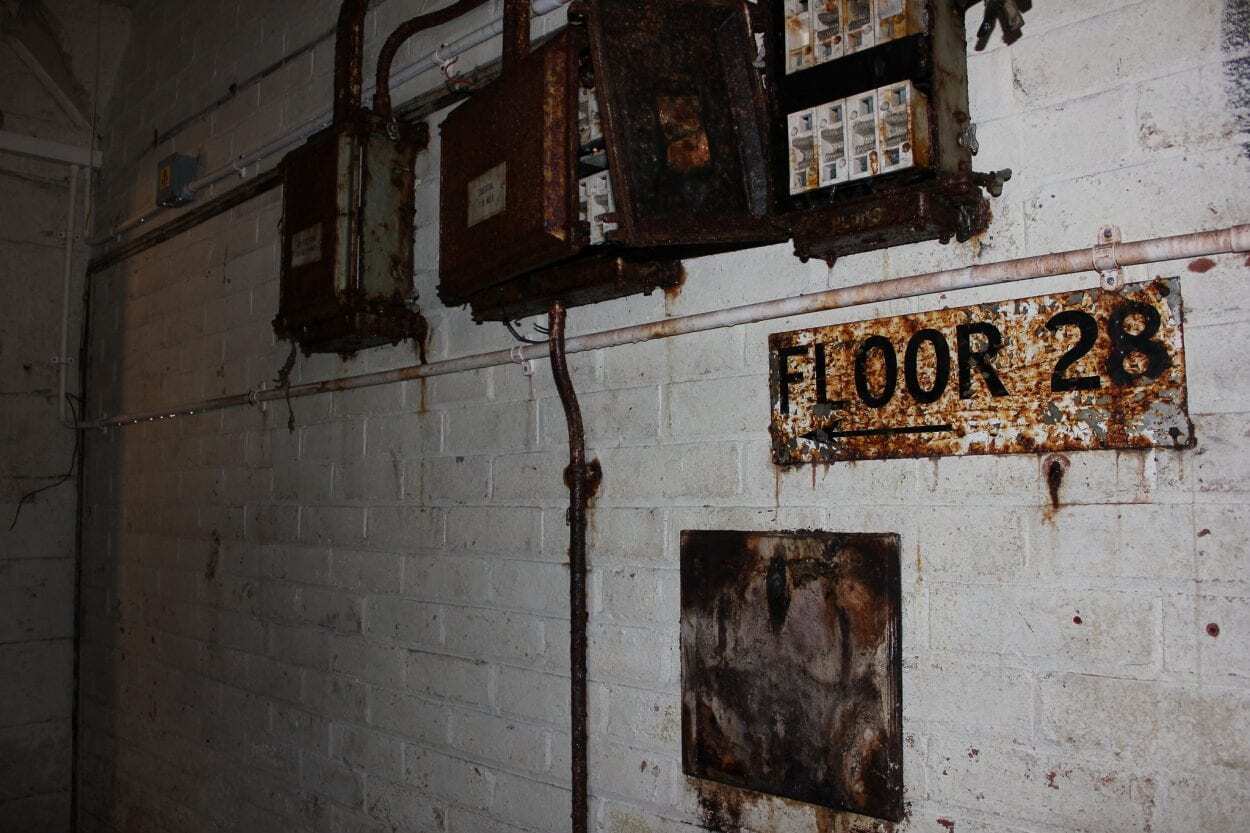During WW2, a secret bunker complex codenamed “Paddock” and “CWR2” was constructed near Paddock Road on the site of the Post Office Research and Development Station in Dollis Hill London.
The purpose of the complex was to provide a reserve headquarters for the War Cabinet, and the Chief of Staff of the navy, air force, and land forces in the event that the adapted Cabinet War Room opposite St. James’s Park was no longer viable.
Plans for the bunker were initially conceived as early as 1937, where the intention was to move the central government and heads of the armed forces to the relative safety of the suburbs of London.

The choice of Dollis Hill was somewhat contradictory, as the area was at the forefront of telecommunications research and would likely have been considered a target for aerial bombardment.
In 1938, four underground bunkers were authorised for each of the armed services with the proposal of the Admiralty Citadel in Cricklewood, the Air Ministry Citadel (also called Station Z) in Harrow, the Army Citadel in Twickenham (although construction of the latter was eventually abandoned), and Paddock as the Emergency War Headquarters.

Paddock was constructed in total secrecy from the beginning of 1939 at of cost of £250,000 (£9,836,600 in today’s monetary value), with the interior being completed by mid-1940.
The bunker consists of some forty rooms on two floors, with the most notable being the cabinet room with seating for up to 30 people, and a large map room.

Accommodation in the bunker was reserved for high-ranking officials and their secretaries, whilst the bunker staff and military personnel would be billeted in local schools or nearby flats.
The first meeting of the War Cabinet at Paddock was in October of 1940, for which Churchill wrote shortly afterward to the Cabinet Secretary that “the accommodation at PADDOCK is quite unsuited to the conditions which have arisen” and is said to have told Sir Edward Bridges “The War Cabinet cannot live and work there for weeks on end …. PADDOCK should be treated as a last resort”.

The second and last War Cabinet meeting took place in 1941, where a review of the Australian war effort was presented by the Australian premier Robert Menzies. Churchill was not in attendance due to a bronchial cold, so instead the meeting was chaired by Clement Atlee, the Lord Privy Seal.
By June the same year, Germany had started Operation Barbarossa, an invasion of the Soviet Union. This led to intelligence officials concluding that Paddock may no longer be required, and the staff stationed in the complex was reduced. By 1944, it was concluded that Paddock had served its purpose and was made redundant as a standing base.

Post-WW2, the upper basement and ground building at Paddock was used by the post office but was vacated in 1976. In 1981, the bunker was considered as a possible site for replacing the North London Group War Room at Partingdale Lane, Mill Hill, but this was rejected due to water seepage in the sub-basement.






Header Image Credit : Markus Milligan





